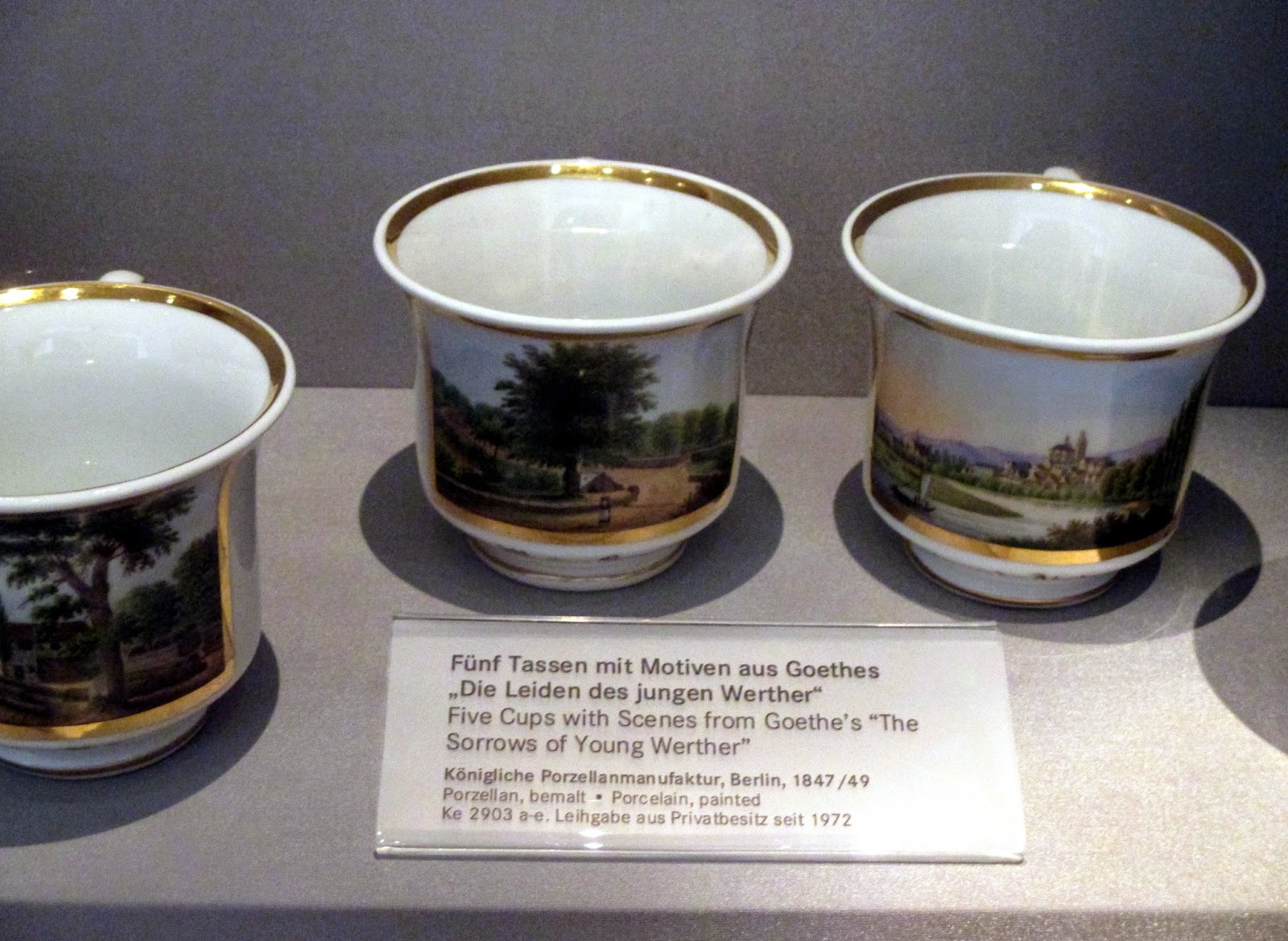
Portrait of the Boy Xaverio as St. John the Baptist, by Johann Friedrich Overbeck
Biedermeier

Chocolate cup with saucer. Meissen
Porcelain (ca. 1860) — at Germanisches
Nationalmuseum.
Farm With Black Sky: Franz Radziwill
1927 — at Germanisches
Nationalmuseum.
Steinway Hammerklavier (Hamburg, 1922) — at Germanisches Nationalmuseum.
The Cult of Goethe (bare-chested)
The Guillotine: In Germany, symbol of the Revolution,
admired by the intellectuals, except Goethe
THE NAZARENES
Portrait of the Boy Xaverio as St. John the Baptist, by Johann Friedrich Overbeck. One
of the German Romantics exiled in Rome,
Overbeck traveled there in 1810 with Pforr and Vogel, to create a new
“patriotic” art through a return to medieval religiosity. These painters in
exile were not seeking ancient Rome there, but
the Rome that
became the capital of Christendom. In the monastic seclusion of San Isidoro,
they strove for a “simple,” heartfelt and intimate art, which was to address
all people equally.
NOSTALGIA FOR ITALY
BUCOLICS
Friedrich Philipp Reinhold, Midday
Rest (Salzburg
Landscape) 1831 —
at Germanisches
Nationalmuseum.
The Dürer kitsch Cult
The Nürnberg Dürer Celebrations held on April 6, 1828, to mark the 300th anniversary of the artist’s death brought together a large number of artists from all of the German states to participate in a “genuine German national celebration.” They dreamed then of a German national state. The stained glass window is the work of Franz Joseph Sauterleute, entitled Portrait of Albrecht Dürer and Scenes from his Life ( 1829-30) — at Germanisches Nationalmuseum.
The Nürnberg Dürer Celebrations held on April 6, 1828, to mark the 300th anniversary of the artist’s death brought together a large number of artists from all of the German states to participate in a “genuine German national celebration.” They dreamed then of a German national state. The stained glass window is the work of Franz Joseph Sauterleute, entitled Portrait of Albrecht Dürer and Scenes from his Life ( 1829-30) — at Germanisches Nationalmuseum.
EROS AND CRUELTY
Anselm Feuerbach, Young Witch being
Led to the Stake (1851) — at Germanisches
Nationalmuseum.
Moritz von Schwind, Detail. Portrait
of the Singer Caroline Hetzenecker, the “Munich
Nightingale” (1848) — at Germanisches
Nationalmuseum.
THE GROTESQUE
The Satirist: From the Series of
Character Heads of Franz Xaver Messerschmidt (ca. (1770-80)
THE GERMANISCHES NATIONAL MUSEUM IN NÜRNBERG
http://www.gnm.de/en/




















No comments:
Post a Comment